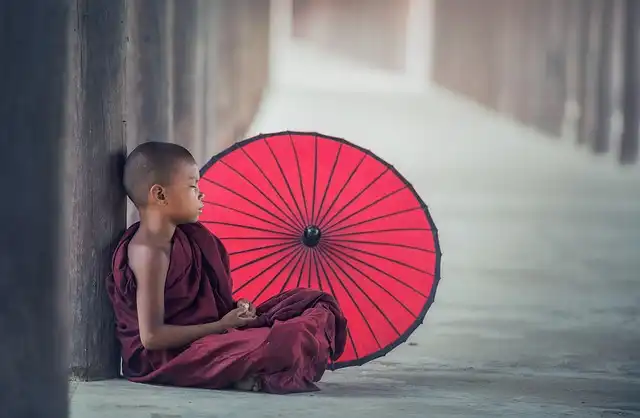“Holy Curse”: Identity, Tradition, and Resistance in Film

Holy Curse explores Radha's struggle with identity and tradition. The film highlights the clash between personal truth and family expectations, examining cultural pressure and resistance. #identity #film
In doing so, the movie placements Radha as an item of gendered subject formation in which their self is invalid except any type of inherent absence yet because the social imagination can not permission distinction. Tradition in “Holy Curse”, for that reason, functions as a technology of fixity: rituals, horoscopes, genealogical ideologies all functioning to place Radha inside normative curves of identification, even when their body, their mind, will not be contained.
Radha: Gendered Subject Formation
Bipasha Bhattacharyya is a grad in liberal arts, with a deep interest in cinema, culture, and innovative storytelling. Her work usually explores the junctions of memory, identification, and politics on display, mixing vital insight with a solid narrative voice. She relies on the power of movie as both art and activism, and utilizes her writing to concern, show, and reimagine the world it depicts. Past movie objection, she also composes innovative duplicates and projects that blend narrative reaction with social understanding. Whether it’s a sharply observed testimonial or a punchy campaign line, her writing carries the exact same intent: to question, reflect, and reimagine the world via tales that matter. Bipasha also creates for Reborn India Film and News Faucet One.
The ethical weight and fear concerning “curse” also return to the epistemology of idea in witchcraft: that to explain bad good luck, be it adolescence, illness, or nonconformity, by means of superordinary explanations is to connect moral failure to difference. In “Holy Curse,” Radha is demonised by customs (real or familial) for being “influenced” by a curse; this places their identity into the mould of danger, poor luck, something to be cleansed or removed instead than accepted.
Curse as Moral Failure
By withholding any kind of glance of what follows Radha’s rebellion, the movie reroutes the audience’s thoroughly cultivated sympathy– not toward sadness, yet toward a remaining concern: what now? This refusal to solve is philosophically systematic, matching the untidy, incomplete nature of identity itself.
This dissonance puts Radha aesthetically beyond their household’s tradition. The teasing by the cousin, the uncle’s declaration, the dad’s glance, all are passed not just through speech yet spatial partnership: Radha pushed away, doorway structures that exclude her, chairs drew back, the spatial distance in the frame in between Radha and those policing the routine. Snigdha Kapoor crafts a deeply emotive arc of identity, ritual, and indoor problem through Radha, culminating in a final act of disobedience that goes to as soon as cathartic and destabilizing. It’s a tear that looks for to appear inherited boundaries, yet one that may leave the target market put on hold in its echo rather than lugged towards a cool resolution.
Ritual, Identity, and Inner Conflict
As Radha goes through ritual and astrology in the effort to “heal” that which the family members experiences as a deviance, I do not just review a narrative regarding browbeating; I see the devices whereby culture and idea can be made use of as devices of physical violence. It’s not the overt fascism that is most excruciating; it’s the normalizing of it, the way in which faith is politicized, the way in which loving family members come to be complicit representatives of shame.
Eleven-year-old non-binary Radha comes to be the objected to ground where tradition, immigrant identification, and orthodox routine clash. In “Holy Curse,” Radha is demonised by traditions (domestic or real) for being “affected” by a curse; this areas their identity right into the mould of threat, negative good luck, something to be cleaned or eliminated rather than accepted.
Tradition as a Regulatory Power
Radha’s need to undergo the orthodox routines and astrological cures in “Divine Curse” is not just a comfort of narration; it’s a look at just how custom operates as a regulatory power of social normativity, specifically in reference to gender identification. Use ritual and astrology by the family members to “repair” what they see as inconsistency is a form of social technique consonant with Foucauldian power over body and identity: identification is something that requires to be surveilled and “repaired” rather than validated.
The comparison reminds us that “curse” is exclusionary language. It calls for obedience, it compels admission, it estranges the “other.” And to that degree, after that, the movie is cutting edge: it makes us knowledgeable about just how today such logics prevail, how non-binary identity or sex difference is usually viewed as “bothersome,” “needs to be fixed,” as spiritual and moral disruption. The pathos of the movie is sharper since the “curse” trope is so old: the motion picture doesn’t just tell us regarding one youngster’s fight, it structures that fight in the context of historic persecution. It challenges us to ask: when has society ever really permitted someone labeled “cursed” to just exist without judgment? And at what cost does it cost them, and the globe, that we still make use of such manuscripts of fear for practice or faith?
Eleven-year-old non-binary Radha comes to be the disputed ground where tradition, immigrant identity, and orthodox routine clash. Their uncle turns to astrology and inherited rites, analyzing Radha’s gender identity as an “unnatural” aberration– something to be detoxified through puja and priestly treatment.
Radha’s Moment of Resistance
The teasing by the cousin, the uncle’s affirmation, the dad’s glance, all are established not just via speech however spatial partnership: Radha pressed to one side, doorway structures that omit her, chairs pulled back, the spatial range in the structure in between Radha and those policing the routine. Snigdha Kapoor crafts a deeply stirring arc of identification, routine, and indoor dispute through Radha, finishing in a final act of disobedience that is at as soon as cleansing and destabilizing. The movie’s final thought, which has actually been praised as a “powerful” act of resistance in and of itself, does become Radha’s minute of resistance: after having actually weathered teasing, routine, astrology, and authoritative events from the uncle and more comprehensive familial stress, Radha makes a decision (or executes a gesture) that equates to rejection– a redeeming of self.
Radha’s presence as a “curse”– an embodiment of genealogical displacement, moral weight, and quiet fear– reverberates across centuries, reaching back to the witch-hunts of Very early Modern Europe and forward to modern scapegoating, where otherness is cast as bad, abnormal, and hazardous. In those European witch trials, the suspects were typically older women, midwives, individual healers, or minimal participants of culture who were not just thought of technique however of evil; their bodies were sectors upon which collective fears, social or financial pressure, deviant sex performance, or nonconformity were forecasted.
Visual Metaphors of Internal Conflict
In ritual-preparation shots, ritual items, scent sticks, diyas, stitched materials with standard patterns, are not simply decoration however anticipation devices: the setup, gloss, ritual order inform more than words. Sharma shoots Radha frequently in half or side light to ensure that half of their face is brightened by lights or sunshine, the other remaining dark. That chiaroscuro turns into one allegory for internal conflict: the part of self that is supported vs. the one concealed. At times, the video camera lingers in long, unbroken takes, letting routine incantations resound with the frame and Radha’s peaceful resistance surface area wordlessly– a hand hovering over the diya, fingers folding right into fabric– gestures put on hold in air, weighted with overlooked defiance.
Radha’s predicament is “highlighted … for the dead-end she remains in”– yet the finishing threats turning that “dead-end” into a stuck picture as opposed to an instant of transformation. It becomes an image and not a progression. And in dramatization, specifically identity drama, you require that progression (even symbolic) to lug with you past the edge of the frame. While “Divine Curse” is strong, luminous, and urgently necessary, its end– endure in its really rejection to provide closure– occasionally signs up as a murmur when it most needs to holler. The pathos falters specifically because the film attracts its emotional journey to a close equally as it seems poised to take flight, handing the weight of envisioning the future over to the target market. To ask this of visitors is a courageous imaginative option, however likewise a gamble: some will be mixed by the silence, while others might discover themselves adrift within it.
Intimacy Without Sentimentality
Among the film’s most striking leaps hinges on just how it makes Radha’s struggle achingly intimate without ever before tipping right into sentimentality. The confusion, the quiet betrayals, the squashing weight of every look that brands them as “various other” are stimulated as opposed to expressed, simmering below the surface area. Juhi Sharma’s camerawork turns down ornamental shine for restraint: still surface areas, the grain of wood panels, the level appeal of ritual fabric, and the low-key gleam of oil lamps casting uneven shadows throughout walls, where idols and puja finery stick around in quiet edges.
The film’s verdict, which has been applauded as a “effective” act of resistance per se, does end up being Radha’s moment of resistance: after having weathered teasing, ritual, astrology, and authoritative events from the uncle and more comprehensive familial pressure, Radha decides (or does a motion) that amounts to rejection– a reclaiming of self. It’s right here that the movie’s emotional resonance falters: after developing such searing emotional and sociocultural tension, the resolution– though potent in its pointer– never completely supplies the reward the narrative has promised. It’s a crack that undercuts the pathos, leaving the psychological arc just timid of satisfaction.
The rituals take area within the claustrophobic interiors, cluttered with domestic artefacts, curtains, darkness; contrasted with short outside shots– a doorway, a short courtyard, perhaps a terrace, where light floodings and area is possible. Radha’s garments obtains these colours from time to time, however generally is lighter or cooler colours, presenting visual harshness in between self and atmosphere.
It opens up with Radha, just 11, captured at the crossroads of immigrant life in the United state and the weight of acquired Indian custom. Radha is non-binary, and their gender identification isn’t mounted as a quiet, exclusive projection; it emerges into the world– a disturbance their family members views not as fact but as something to be contained, took care of, or “dealt with.”.
The narrative stress propelling the motion picture– routine vs custom, identity vs fact, silence vs assertion– has to be allowed out, and although the verdict is a kind of breaking point, it’s just a fraction of an inch short. The viewer is left asking yourself if Radha’s tiny act of defiance will certainly ripple forward right into the next frame, if change will certainly adhere to, or if silence and repression will certainly take up once more in an additional semblance.
1 artistic identity2 cultural pressure
3 film analysis
4 gender identity
5 Holy Curse
6 tradition
« Black Phone 2: Grabber’s Revenge & Dream ViolenceMaron vs. Stewart: Comedy, Envy, and Podcast Cycle »
